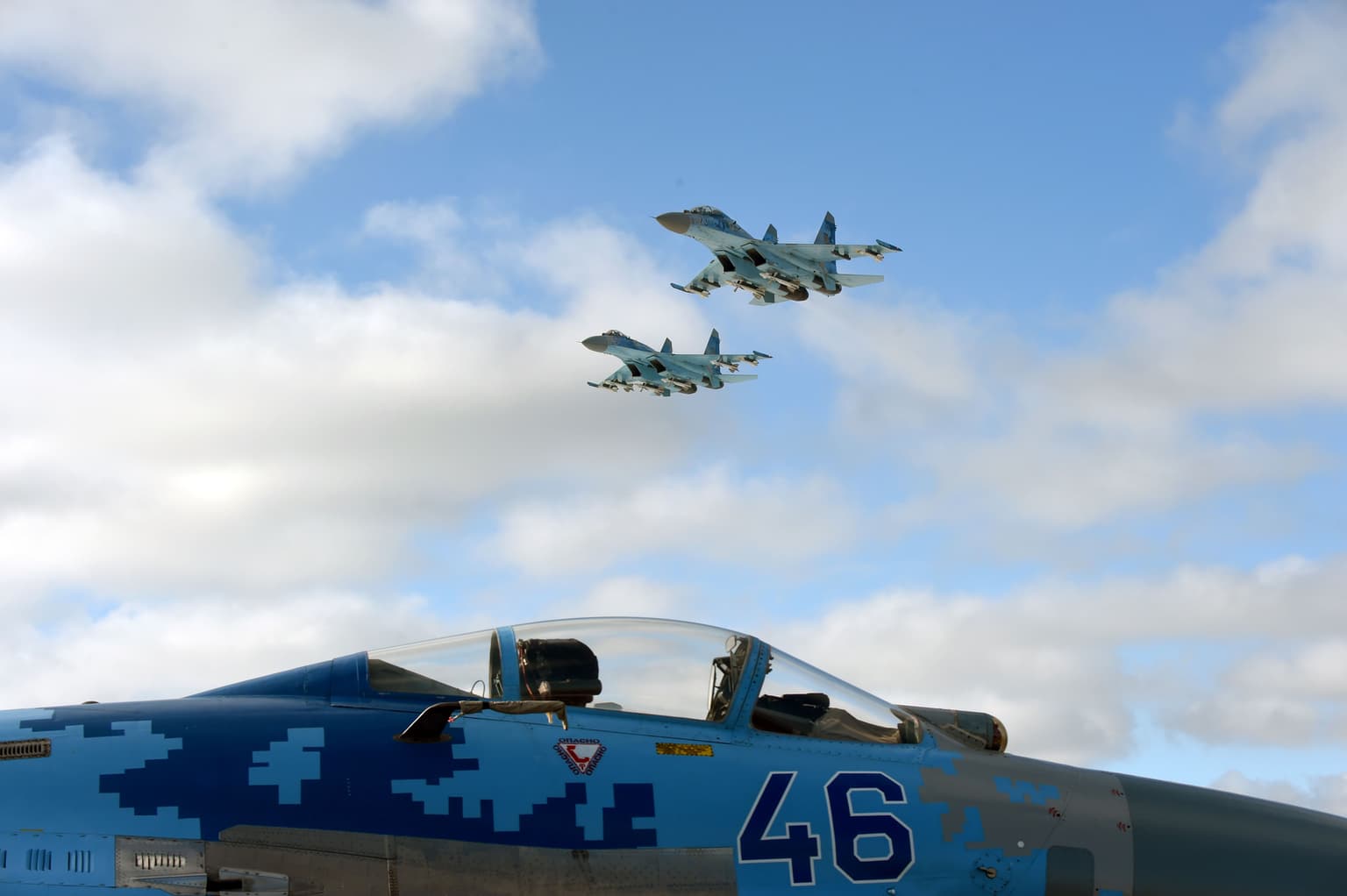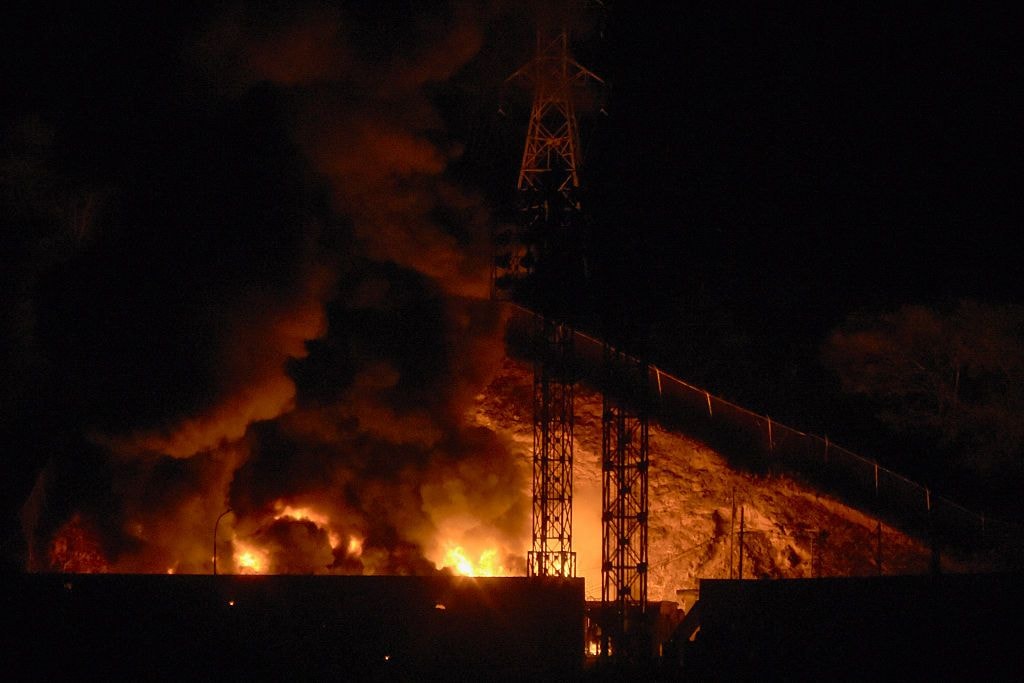Ukraine in critical need of long-range weapons to counter Iranian missiles

The war in Ukrainian skies is now as intense as the battles on the ground.
It’s been weeks since Russia switched to an airstrike campaign against Ukraine’s critical energy infrastructure.
Cities plunged into darkness, but the Ukrainian Air Force says it is steadily adapting to the threat, intercepting most of the incoming Russian cruise missiles and kamikaze drones.
The battle for Ukrainian skies is only beginning.
Russia has likely spent most of its missile stockpile. But with Iranian support, it will be able to carry out attacks on the Ukrainian population for the foreseeable future.
Ukraine’s air defense, at high cost, gives an effective counter to Russian-operated Iranian Shahed-136 drones.
But it will find it extremely hard to counter Iranian-made ballistic missiles Fateh-110 and Zolfaghar, which are expected to be shipped to Russia.
The Ukrainian military is facing a severe need for Western high-precision, long-range weaponry and the ability to target launch sites in Belarus and Russia before missiles are fired at Ukrainian cities.
Swarms in the night
Over the last few weeks, the Ukrainian military has been reporting varying efficacy in combating Shahed-136 kamikaze drones.
On Nov. 2, Ukraine allegedly downed 12 out of 13 kamikaze drones attacking targets in the eastern and central parts of the country.
Between Oct. 27 and Nov. 4, Russia launched nearly 30 Shahed-136s, 40% of which were downed, according to Brigade General Oleksii Hromov of Ukraine’s General Staff.
Amid relentless attacks, the Ukrainian military, over the last few weeks, has managed to develop new algorithms for combating the Shaheds, according to Colonel Yurii Ihnat, a spokesman for the Ukrainian Air Force.
The air defense is adapting, with between 60% and 70% of the Iranian drones being shot down. In some cases, the efficacy goes up to 90%, according to Ihnat.
At the same time, Ukraine’s Air Force has to overspend the air-to-air and surface-to-air missiles to down cheap and simple drones that nonetheless pose a serious threat.
Russians also adapt to Ukrainian defenses and constantly change the drones’ flight routes and use them only during the night, Ihnat told the Kyiv Independent.
Among the most important Shakhed launch sites is the Luninets base in Belarus’ Brest Oblast, just some 320 kilometers northwest of Kyiv, according to Ukraine’s military.
By early November, after nearly a month of intense use against Ukraine, Russia spent the whole batch of 300 drones supplied by Iran, according to Ukraine’s Defense Minister Oleksii Reznikov.
But, according to the official, Russia reportedly procured a total of between 1,500 and 2,400 drones from Tehran.
“This doesn’t mean (Russians) have received all of them,” Reznikov stated on Nov. 4.
“Considering the fact that Iran also transfers such drones to other countries, and the fact that… (the situation in Iran) is not very calm, we have hope Iran will not be able to fulfill its obligations to Russia completely,” Reznikov added.
The Ukrainian military believes it has reached significant air defense efficacy against the Shaheds. Yet, some of them still get through — and inflict serious damage.
Late on Nov. 2, Shaheds successfully hit an energy facility in Kryvyi Rih, triggering massive blackouts in Dnipropetrovsk Oblast.
Hard to intercept
Moreover, according to Air Force’s spokesman Ihnat, Russians increasingly apply the combination of Shaheds and cruise missiles when kamikaze drones help overload the Ukrainian air defense before incoming missiles.
In late October, the Ukrainian military estimated its efficacy at 64% as 81 out of 126 Russian cruise missiles had been downed between the beginning of the month and Oct. 20.
During one of the heaviest days of Russian missile attacks on Oct. 31, 45 out of over 50 Kh-101 and Kh-555 missiles were reportedly intercepted.
Yet, according to Ukraine’s authorities, 16 critical infrastructure facilities were damaged and destroyed in the attack across the country, with missiles and other weapons.
The Russian campaign has already targeted some 40% of Ukraine’s energy grid, which triggers massive energy shortages and emergency blackouts.
The problem behind the Ukrainian inability to intercept more is rather simple — the lack of means and resources, according to Air Force’s Ihnat.
The Ukrainian air defense, heavily relying on obsolete Soviet systems like S-300P/PT, is still outnumbered and outgunned and finds it extremely hard to cover Ukraine, a country bigger than France.
Ukrainian air defense units, including fighter wings, at all levels, must constantly move across the country to avoid being detected and cover at least the most critical areas.
When it comes to S-300 and Buk systems, the most powerful Soviet-made capabilities, the Ukrainian military finds it hard to keep purchasing new munitions from depots worldwide.
In this regard, the Ukrainian command has a lot of hope in Western assistance in developing a multilayered air defense grid covering all bands and altitudes with advanced systems.
Moreover, according to the Air Force, what is important is a large supply of munitions for a prolonged air battle.
“I keep telling this to everyone in world media — let nations that operate NASAMS — such as Spain, Australia, and the U.S. — donate just one battery each. Many countries have it, and there are many AIM-120 AMRAAM missiles around,” Ihnat said.
“We’d be able to substantially amplify our defense.”
After months of intense battles in the sky, even Russian arsenals have been substantially reduced.
By Oct. 12, according to Ukraine’s Defense Ministry, Russia had used 213 out of a total of 444 air-launched cruise missiles like Kh-101 and Kh-555 (48% spent), and 272 out of 500 Kalibr missiles (54% spent).
And according to the Ukrainian military, Russia, as part of its bombing campaign, intensified the use of missiles it likely can’t produce in meaningful quantities due to international sanctions.
When it comes to ballistic missiles, Russia is reportedly facing problems, as months of the war against Ukraine left it with only around 124 out of 900 Iskander missiles.
Likely because of this, the Kremlin also reportedly agreed with Tehran to acquire Fateh-110 and Zolfaghar ballistic missile systems, having reported effective ranges of 300 and 700 kilometers, respectively.

In this regard, the Air Force spokesman says everyone should be “realistic” about the Ukrainian chances against ballistic missiles.
“We can’t intercept them,” Ihnat said.
“Because we will never have enough capabilities to cover the whole 2,500 kilometers of our border (with Russia and Belarus),” he added.
The Air Force expects the Kremlin to deploy the Iranian missiles north of the Ukrainian border in Russian and Belarusian regions. In this case, they will be able to reach targets in Kyiv within 15 minutes or so.
“We need to be thinking not about a sort of Iron Dome — but about destroying Russian missile systems on their launchpads,” Ihnat said. “This is the easiest and the most realistic way.”
When it comes to Western-provided systems like IRIS-T or NASAMS, it remains to be seen if such systems are effective enough against ballistic missiles in combat.
So far, the Ukrainian military has found it hard to apply practical algorithms against Russian Iskanders due to the complex nature of such targets.
The Iranian missiles are technologically inferior to the Iskander missiles. But nonetheless, the Fateh-110 carries a 600-kilogram warhead, a serious threat to Ukrainian infrastructure.
And the Zolfaghar (in operation since 2017) is capable of separating its warhead from the rest of the missile body in the flight’s midcourse phase, which makes it even more challenging to detect and intercept.
However, according to war expert Oleksandr Kovalyov of the Information Resistance group, Iran will likely be capable of providing Russia with no more than between 100 and 200 missile systems.
Just like the Kremlin now, Tehran’s production capability of such a complex is very limited and dependent on smuggled foreign components.
____________________________________________
Note from the author:
Hello! My name is Illia Ponomarenko, the guy who wrote this piece for you.
I hope you found it useful and interesting. I work day and night to bring you quality stories from Ukraine, where Russia is waging the biggest war in Europe since WWII. My little homeland, Donbas, is now the site of the worst fighting. We are helping to keep the world informed about Russian aggression. But I also need help from every one of you — to support Ukrainian wartime journalism by donating to the Kyiv Independent and becoming our patron.
Together, we can help bring peace to Ukraine.











